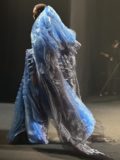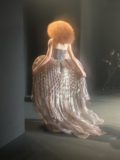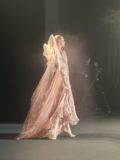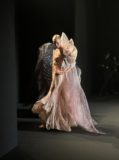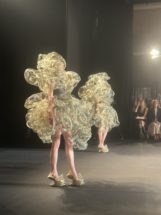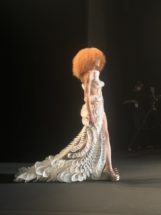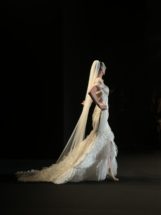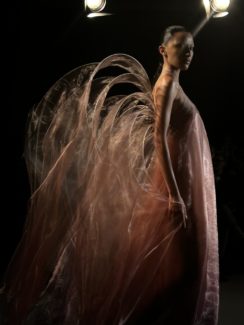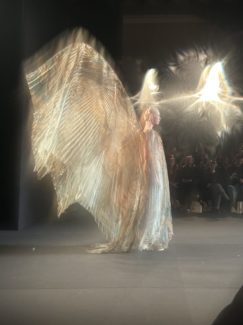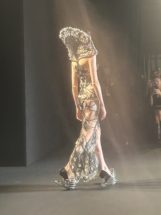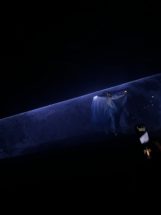_
In her latest collection, Iris Van Herpen has reached the absolute apex of her artistry, reaching heights of visual language that allow us to experience her best collection to date quite literally in 4D. With an introductory dance performance by choreographer Julie Gautier, the spectators are instantly transported into Van Herpen’s universe of exquisite cyber-naturalism. The performance—developed in collaboration with light artist Nick Verstand—saw the dancer shimmer in and out of perception, her silhouette swallowed by flickers of light and smoke, becoming something both spectral and bioluminescent. And with a delicious fragrance experience diffused by Maison Kurkdjian, I think I could stay here forever. This season at Iris Van Herpen we are reminded of why couture stands alone amongst men’s and women’s fashion weeks—here, design, tailoring, material and reference meet a real fine-artistic practice—interpreted on all sides, and in this is born another triumph for the designer.
The distinctive world-building she erects through her iconic designs and the elements that they are presented alongside flows like water throughout her collection, and for the daughter of an irrigation architect, it must only be second-nature. But while the inspirations may be of this earth, her painstakingly intricate interpretations of natural inspirations lean farther into the future than perhaps anyone to date. This interplay—of biology and futurism, fragility and power—is encapsulated in a look on everyone’s lips: a Geiger-esque bodycon gown made of bioluminescent algae which delicately glowed a hazy green halo as the model made her way down the runway amongst smoke clouds which, through clever light direction, appeared to be mechanically drawn into the space. The algae, cultivated in a nutrient gel chamber and nurtured over months in sea-water baths, were embedded into a living membrane—redefining not only material but the process of garment creation itself. A criss-cross stitched iridescent organza formidifies the delicate beauty of the material and provides sculptural structure to create in one piece massive black wings, and in another look, a giant flouncy heart-shaped pink bustle which both bounce down the runway, almost stoically.
Elsewhere, other pieces expanded Van Herpen’s ever-growing lexicon of organic futurism: translucent coral-inspired forms made from brewed protein fibers developed by biotech company Spiber, undulating winged silhouettes suspended in golden coil armatures, and a gravity-defying jellyfish look that dissolved in motion like pigment caught in a tide. The wonder of the show, however, wasn’t just technical—it was emotional. “This collection is a collaboration with nature itself,” Van Herpen said. In a time of ecological emergency, Sympoiesis doesn’t preach; it performs. It reminds us that nature is not a reference point but a collaborator, and that the future of fashion may not lie in conquering material, but in caring for it. Here, the body is not isolated, but an ecosystem—where couture lives, breathes, and responds with delicate intelligence

